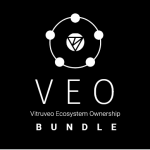VTRU Studio’s innovative licensing model offers artists unprecedented control over how their works are commercialized and distributed, challenging the limitations of traditional art commercialization methods. Unlike conventional agreements that often bind artists to exclusive contracts, VTRU Studio provides a flexible, blockchain-integrated system where artists retain authority over their creations.
Key Advantages of VTRU Studio’s Licensing Model:
- Flexibility and Control: Artists can specify the rights they wish to grant for each artwork, whether for digital displays, NFT minting, or physical reproductions. This ensures they maintain more control over how their work is used and monetized.
- Multiple Licenses for a Single Artwork: VTRU Studio allows artists to apply different licenses to a single piece, enabling them to generate revenue from various streams—such as selling NFTs while offering physical prints or digital licenses.
- Direct Blockchain Integration: Artists can consign their work directly to the blockchain, embedding detailed metadata and licenses. This eliminates the need for intermediaries like galleries or agents, allowing artists to reach a global audience and potentially increase their profits.
- Transparency and Security: Blockchain technology provides an immutable record of ownership and rights for each artwork, enhancing trust and reducing potential disputes between artists and buyers.
- Global Accessibility: Traditional art markets are often restricted by geographical barriers, but VTRU Studio’s blockchain-based model opens access to a worldwide audience, allowing artists to reach international buyers with ease.



